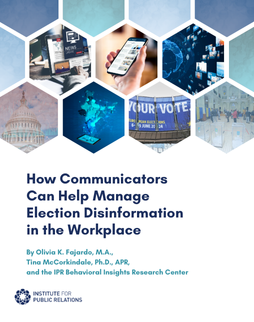Sarah Beccio has spent most of her career working with and advocating on behalf of Native and Indigenous communities. Sarah has worked in public affairs and communication for the National Congress of American Indians, the U.S. Department of the Interior Indian Affairs, The Indian Gaming Commission, and founded her own firm, Indigecomms. In 2019, Sarah and her brother started a non-profit Codetalkers that brings coding and programming to tribal schools and communities. She is now the Director of Tribal Affairs for Unite Us.
First why don’t you tell me about the firm you founded, Indigecomms?
Indigecomms became an idea around 2013. There was a school shooting that involved tribal Native youth, and the tribe was not prepared for the amount of media calls so because of my position at NCAI I was able to have the media requests and calls forwarded to me. It made me realize some tribes just don’t have the capacity to handle public relations. And when they went to PR firms for advice and help, they were given advice that was met with stereotypes.
You and your brother founded a nonprofit called Codetalkers. I would love to hear more about it.
There are a lot of great programs out there that bring coding to communities but my brother and I didn’t see one that was coming to tribal communities. So we created Codetalkers, a nonprofit whose mission is to bring coding and programming to tribal schools and communities. We were lucky enough to partner with Facebook and host a coding robotics camp at Isleta’s department of education during their summer program. That partnership actually happened because of my involvement with Washington Women in Public Relations. I was the first Native American appointed to their Board and when the press release went out, Facebook contacted me and said we would like to talk to you about your non-profit. When COVID-19 hit we were able to use our partnership with Facebook for emergency technology funding for my tribal elementary school. COVID-19 showed the digital divide in this country. We know it’s been there for decades but it was put in front of people’s faces in 2020. We want it to grow bigger to expand to different tribal programs across the country.
Tell us a little bit about how you played a role in helping your community during COVID-19?
It is hard to help from 2,000 miles away but I was able to take what I was hearing and learning here in Washington and send that information back to Isleta. I spent a lot of time working with some tribal council members on the details of the CARES Act, and describing formulas that were used for allocation. I feel a sense of responsibility to take bills and other decisions that are being made in D.C. and show tribal leadership how this is going to affect us now or in the future.
Want to talk about the gaps in equity and what you saw during COVID-19?
You can give students all of the technology in the world but if they don’t have access to broadband, they can’t use it. So while some kids were able to attend virtual learning there were some that were working off of paper booklets. And these are students of all ages, but they don’t have wi-fi, and the kids were being punished for being absent. With the Facebook funding we tried to make sure the kids were supported. A lot of these huge wireless carriers were offering free hotspots to county and city schools but no one reached out to Isleta to offer free hotspots. I don’t know if that’s a lack of knowledge on Indian Country, Bureau of Indian Education, or and I hope this isn’t it, that helping us wasn’t going to give these companies huge PR opportunities. It just would have been nice to receive the same opportunities. It would have been easy for some companies, but nobody wanted to help.
President Joe Biden’s presidency will have a significant impact on Native communities. For example, in 2021, Deb Haaland, a member of the Pueblo Laguna, was sworn in as Secretary of Interior, the first Native American to serve as a cabinet secretary. What is the impact of this?
It’s so amazing. When Deb was being sworn in as a congresswoman she put a blanket on her chair and made “That’s so Native.” That’s representation. It’s emotional. Native children see her getting sworn in as Secretary of Interior in her traditional attire, and say, “Hey, I have that in my closet.” With her in that leadership position, that money is now going to somebody that has lived it, breathed it, and I believe she will distribute it as she sees fit.
I mean I think there is more hope. Obama had the tribal leaders come every single year and meet with cabinet members, and that was stopped when he left office. Biden knows that blueprint, that playbook, and you see it. He’s hired many Natives. That gives me hope that we have someone in there that is one of us.
The first-ever tribal youth gathering was here as well in 2015, which I got to be a part of. I mean, that was intense. Some of those kids never thought they would visit D.C. and definitley didn’t imagine they would be in the same room with the First Lady. You saw President Obama and the First Lady go out to different tribal nations. They normalized it.
One of the reasons why I wanted to have this conversation with you is diversity, equity, and inclusion is very important to the work we do at IPR. When we were building our Center for DE&I, we noticed there was an absence of research or even consideration in communication related to Native American communities. Can you talk about this? Is this a neglected population in our field?
Natives don’t necessarily want to tell you everything. If you’ve been burned by the government, why would I want to tell anything? Who are you going to tell? And it’s not neglected. It’s just that we aren’t amplifying Native voices. There are a ton of Native journalists. It’s not anybody else’s story to tell except the people that are living in it. And Natives are natural storytellers so let them talk. Let them write.
When you talk about health or communication inequities, how can you then elevate the story if people may not be willing to tell it?
As a communicator, it’s my job to take a Native’s voice and make sure their voice is heard. Social media has given Natives an amazing platform to use their voice. We also have some great sources for our communities such as Indianz.com and Indian Country Today. Even in our industry, we need to make sure the Natives’ voices are heard. If you are on a PR panel, make sure there are different voices represented. It’sit’s my responsibility and your responsibility to make sure people are heard.
Sometimes we get this stereotype of, “You don’t look Native.” In the media, sometimes stories are featured when things are bad, such as the Navajo Nation during COVID-19. With 570 federally recognized tribes, most stories showcase only when things are bad. They don’t necessarily want to showcase anything really great happening in Indian Country, even though there are many great things happening. That’s why Native sources are so important—they’re writing about good things happening with tribes. As comms people, we need to make sure we’re getting news and our sources from the right place.
What are you hopeful for over the next couple of years? What would you like to see change for the better?
I think industry-wise I would like more acknowledgment of Indian Country. Don’t talk for us. Don’t talk at us. Let us talk. Not every Native is going to agree on one thing, but it’s important to hear all sides and pay attention to Native issues. As an industry, I think it’s our responsibility to ensure that Natives have a seat at the table. Natives must have a seat at the table. We’ve been left out for so long. It’s enough.
Donate. Put money behind it. Be an ally. If you don’t see us, call it out.
This has been a tough and long year. What have you missed the most during the pandemic?
Hugging my friends. So many things happened during the pandemic. Babies were born and I have yet to meet or hold them. I’ve lost a year. My dad is getting older and it’s tough to not have that time. And I miss laughing with my friends and family. I miss being close to friends and just being able to go and be a part of everyone’s life again.
Last question, are there any books, podcasts, or TV shows or that you would recommend?
Right before COVID hit, I was listening to the podcast, “Second Life,” with Hilary Kerr. She has women business owners and it’s really interesting to hear when women talk not just about their successes but also when they fail. I feel like we look at women and we’re like, “Oh my god. She just went through college and look at her. She’s successful in her business and made the ‘Forbes 30 under 30’ and all these other things.” But it feels really good when somebody says, “Yes, I own a multi-million dollar company but, it didn’t happen over night. I lived in my car, or I didn’t have money to do this.” I also recommend the podcast, “This Land,” about a Supreme Court case involving land rights. Books I recommend are “The Round House” by Louise Erdrich (Ojibwe) and Killers of the Flower Moon: The Osage Murders and the Birth of the FBI.
Thanks so much for talking with me, Sarah. I appreciate you taking the time and hope to see you in person soon.
Thank you, Tina. Appreciate the opportunity.



